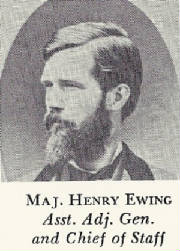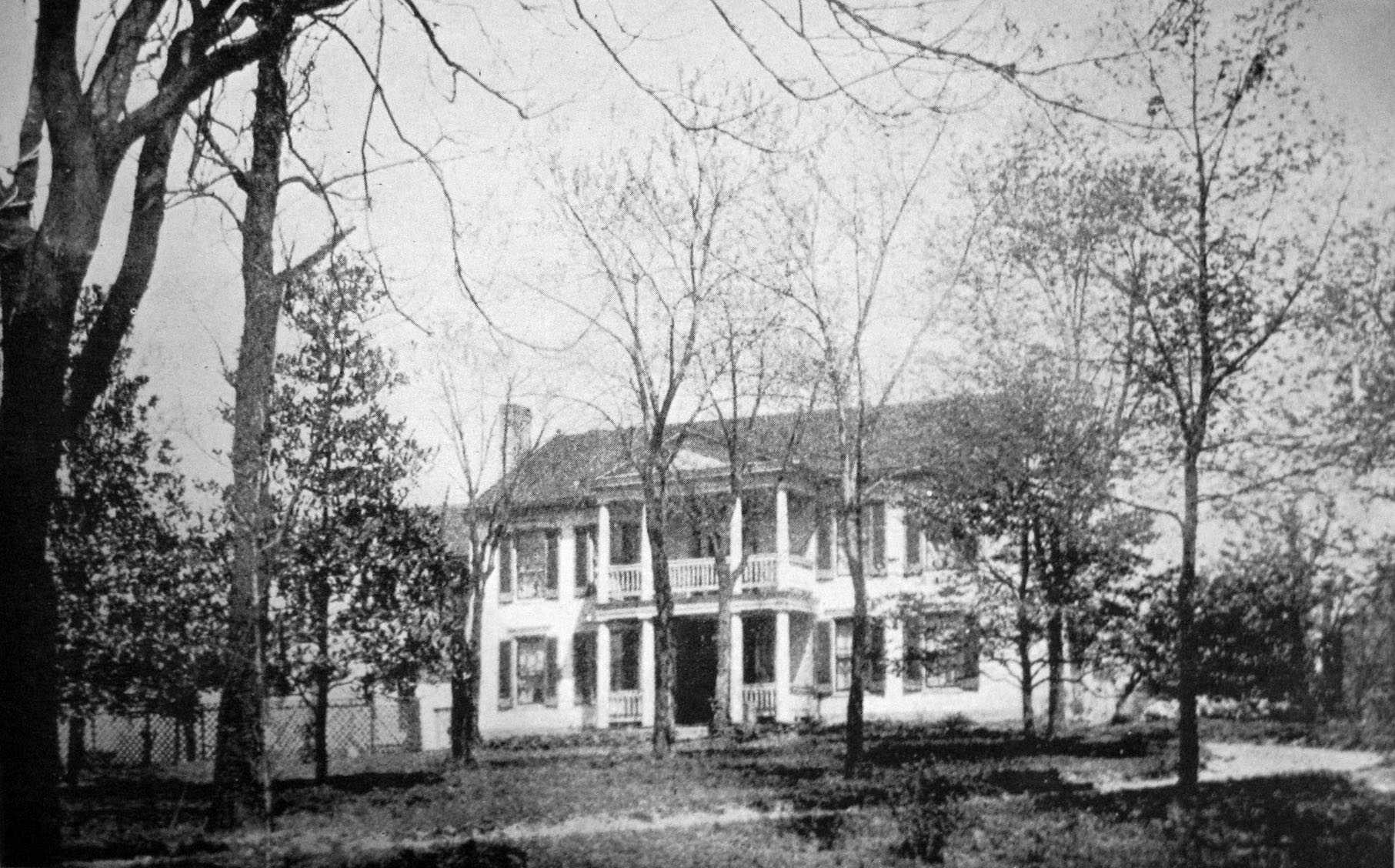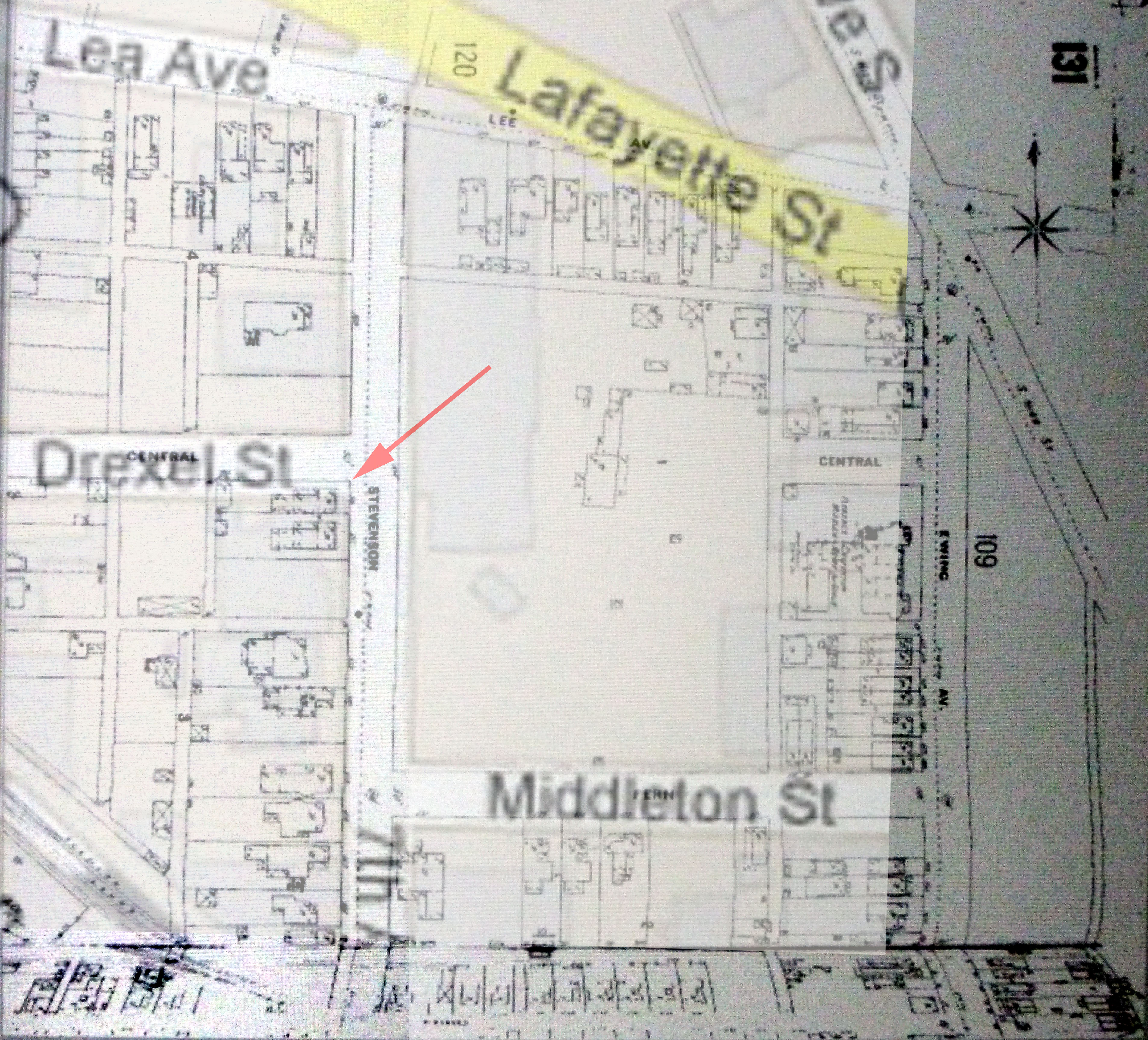|
Milbrey was born 8 Dec 1815 at Maplewood on
Gallatin Pike in Inglewood Davidson county TN. She died 27 Sep 1864 in Davidson County TN. She married Orville Ewing on 26 January 1832 in Davidson County TN. She is buried in the Nashville City Cemetery

Milbrey Horn Williams Descendant Report

Found on newspapers.comNewspapers.com

Nashville City Cemetery

Orville Ewing (brother of Andrew and Edwin Ewing), was educated as
a lawyer, but never practiced. He was president of the Planters Bank of Nashville and the brother of Andrew and Edwin Ewing
who were married to Milbrey's sisters.
The house below was built by Anthony Foster, one of the early settlers in 1780, and
was purchased by Orville and Milbrey Ewing who raised seven children there. They were living there during the civil war when
Nashville was under military rule and Federal soldiers camped continually on the beautiful lawn.
The house was named "Mile End" and was located one mile south of the Nashville square where, in
1905, St. Katharine Drexel founded the Immaculate Mother's Academy, the state's first Catholic school for African-American
girls which replaced the house. In 1954 the school was demolished and replaced by a large Sears store which remained there
until 1991.
Shortly thereafter the Nashville Rescue Mission and homeless shelter occupiied the old Sears store
and remains there today in 2008. Leaving downtown Nashville on eighth avenue south, turn left onto Murfreesboro Road (Lafayette
Street) and you will see the Nashville Rescue Mission on your right.
Milbrey planned the gardens, marking the central square with a tall Norway spruce tree bordered
with shrubs and flowers. Graveled walks radiating from the center and intersecting at right angles formed squares where calacanthus,
pyrus japonica, licacs, bridal wreath, and roses flourished. On the north side a brick wall formed a natural trellis for the
grapevines, and on the south fruit trees and a vegetable garden lay beyound the flower beds. On the east side handsome trees
and a hedge of Bois d'Arc formed a green background for the garden.
The entrance to the greenhouse was covered with a star jasmine, and here pomegranates, Marechal
Neil, and other rare plants were kept. A Catalonian jasmine within its shelter furnished bouquets for many family brides.

Mile End, the home of Orville Ewing and Milbrey Horn Williams
(Picture and below text copied from the book
"History of Homes and Gardens of Tennessee" compiled by "the
garden study club of Nashville" and published by "The Parthenon
Press" in 1936)
A mile from
Nashville's Public Square, Anthony Foster, pioneer
citizen of the city, built a Colonial brick residence which bore
the name Mile End.
During
the Civil
War, the home, then owned and occupied by Orville
Ewing, was under military rule, and Federal soldiers
camped continually on the beautiful lawn.
Mrs. Ewing, the
former Miss Milbrey Williams, planned the gardens,
marking the central square with a tall Norway spruce
tree bordered with shrubs and flowers. Graveled
walks radiating from the center and intersecting at
right angles formed squares where calacanthus, pyrus
japonica, lilacs, bridal wreath, and roses flourished. On
the north side a brick wall formed a natural trellis
for the grapevines, and on the south fruit trees and a
vegetable garden lay beyond the flower beds. On the
east side handsome trees and a hedge of Bois d' Arc
formed a green background for the garden.
The entrance to the
greenhouse was covered with a star jasmine,
and
here pomegranates, Marechal Neil, and other rare
plants were kept. A Catalonian jasmine within its shelter furnished bouquets for many family brides.
Between 1873
and 1880 Mile End was the home of Dr. William Morrow, and afterward of Mrs. James Woods. In 1880 it was purchased
by Mr. and Mrs. S. J. Keith, who occupied it for twenty-five years. In 1905 Mile End was sold, the house and gardens
were demolished to give space to the building erected for St. Katherine's, a Catholic school for Negro girls.
Steven Hoskins wrote the following document about
the corner where this house was located.
Mile End History
The Sanborn map of Nashville for 1914 shows the location where
the Mile End house was located on 7th Avenue just south of Murfreesboro Road, named Lafayette Street.

The below dissertation was written by Steven Hoskins at MTSU
in pursuit of the degree
of Doctor of Philosophy.
Miles End Disertation by Larry Feldhaus on Scribd
|

